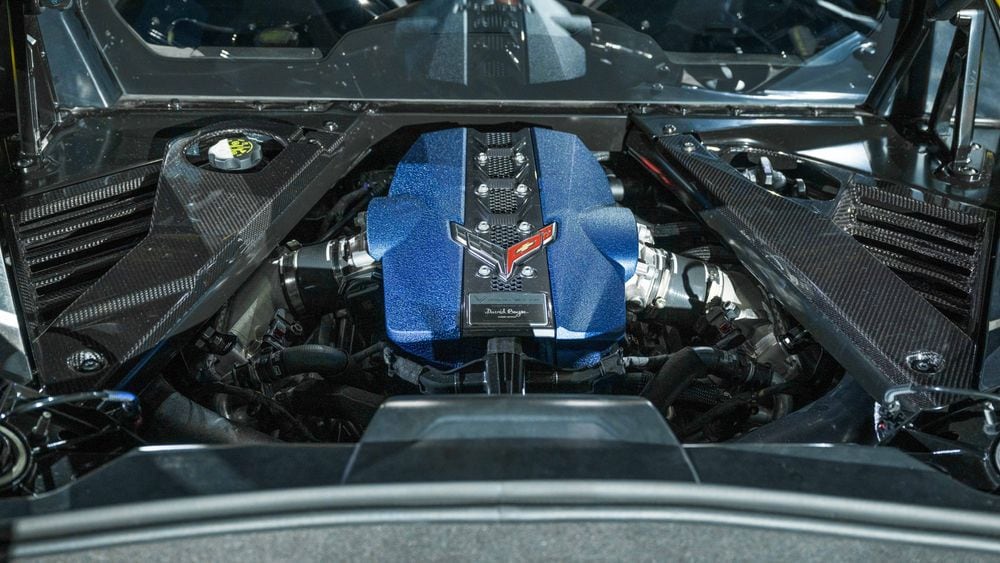If you want to make a huge amount of power with an internal combustion engine, you have three tools at your disposal: big displacement, forced induction, or high rpm. However, if you’re a GM engineer wanting to create an utterly obscene amount of power with your new V-8, you don’t limit yourself to just one tool—you use all three approaches to create a technological powerhouse.
That’s the story of the 2025 Chevrolet Corvette ZR1’s V-8 engine. To punch out 1,064 horsepower, the LT7’s eight pistons sweep across 5.5 liters of displacement as two turbochargers stuff up to 24 psi of atmosphere into the cylinders. Moreover, a flat-plane crankshaft spins as fast as 8,000 rpm. Here’s the story of how the most powerful V-8 in an American production car came to exist.
A Mountain of Power and a Tower of Torque
The 2025 Chevrolet Corvette ZR1 makes 828 lb-ft of torque at 6,000 rpm and 1,064 horsepower at 7,000 rpm on its way to an 8,000-rpm redline. Those high-rpm peaks might lead you to believe the LT7 has the characteristics of a high-strung exotic, but this engine also has the hallmark low-end thrust of a boosted engine. In fact, there’s more than 800 lb-ft of torque from 3,000 to 6,500 rpm.
Why Use Turbos Instead of a Supercharger?
The C6 and C7-generation ZR1s made 638 and 755 horsepower, respectively, using supercharged 6.2-liter V-8s. It would have been reasonable to assume the C8 would follow suit with a belt-driven blower. However, bolting a supercharger to the lightweight cranktrain of a flat-plane V-8 compromises its effectiveness, leading to a loss of its fast-revving character.
Turbochargers are also more efficient than superchargers, not just in terms of fuel economy, but also in squeezing more power out of a given amount of fuel and air. A supercharger uses a portion of the engine’s power to overcome the friction of the blower. Consequently, turbos don’t incur the same efficiency penalty, allowing the ZR1’s LT7 to make more power with less displacement.
Don’t Call It a Boosted LT6
Development of the LT7 and the Corvette Z06’s LT6 naturally aspirated V-8 started in tandem under the codename Gemini, but these engines are fraternal twins, not identical. They share the same block casting and bore but diverge significantly in performance specifications. With immense power comes immense heat and pressure. Compared to the LT6, peak cylinder pressures climb significantly in the LT7.
About Those Blowers
The turbochargers move an incomprehensible amount of air through the engine. At full throttle, they pump enough air to fill an Olympic swimming pool in four minutes. The ball-bearing turbos can spin at exceptional speeds, allowing the engineers finer control over boost pressures and ensuring minimal turbo lag.
A Legend in the Making
While we can imagine that nothing compares to driving the LT7, the numbers and the technology behind this V-8 are incredible. The way the torque hits and the engine revs to its lofty redline is truly remarkable. Therefore, we can expect this V-8 to have its own significant chapter in the history of internal combustion engines.




